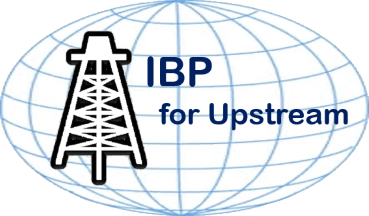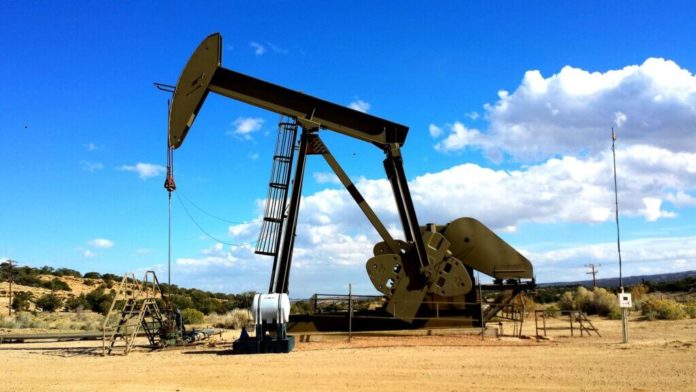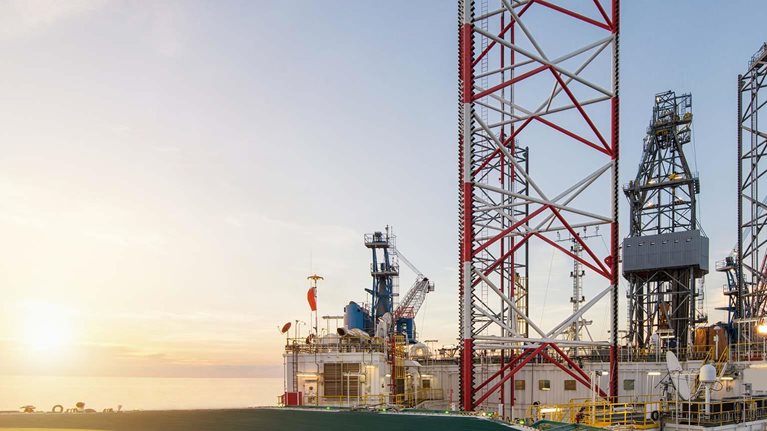Need a business plan? Call now:
Talk to our experts:
- Business Plan for Investors
- Bank/SBA Business Plan
- Operational/Strategic Planning
- L1 Visa Business Plan
- E1 Treaty Trader Visa Business Plan
- E2 Treaty Investor Visa Business Plan
- EB1 Business Plan
- EB2 Visa Business Plan
- EB5 Business Plan
- Innovator Founder Visa Business Plan
- UK Start-Up Visa Business Plan
- UK Expansion Worker Visa Business Plan
- Manitoba MPNP Visa Business Plan
- Start-Up Visa Business Plan
- Nova Scotia NSNP Visa Business Plan
- British Columbia BC PNP Visa Business Plan
- Self-Employed Visa Business Plan
- OINP Entrepreneur Stream Business Plan
- LMIA Owner Operator Business Plan
- ICT Work Permit Business Plan
- LMIA Mobility Program – C11 Entrepreneur Business Plan
- USMCA (ex-NAFTA) Business Plan
- Franchise Business Planning
- Landlord Business Plan
- Nonprofit Start-Up Business Plan
- USDA Business Plan
- Cannabis business plan
- eCommerce business plan
- Online Boutique Business Plan
- Mobile Application Business Plan
- Daycare business plan
- Restaurant business plan
- Food Delivery Business Plan
- Real Estate Business Plan
- Business Continuity Plan
- Buy Side Due Diligence Services
- ICO whitepaper
- ICO consulting services
- Confidential Information Memorandum
- Private Placement Memorandum
- Feasibility study
- Fractional CFO
- How it works
- Business Plan Examples

Oil and Gas Business Plan
Published Mar.28, 2024
Updated Apr.23, 2024
By: Alex Silensky
Average rating 5 / 5. Vote count: 3
No votes so far! Be the first to rate this post.

Table of Content
The oil and gas sector is a highly regulated industry. A well-structured oil and gas business plan can help navigate these complexities.
According to a survey by EY, inadequate business planning is one of the top reasons oil and gas projects fail to achieve target profitability. “Firms that take a comprehensive approach through integrated business planning are better positioned to withstand market volatility and capitalize on opportunities,” notes Herb Listen, EY’s U.S. Oil & Gas Leader.
In this article, we’ll outline the key elements of an oil and gas business plan along with an oil and gas business plan template. By the end of this article, you’ll understand what it takes to develop a robust oil and gas drilling business plan.
What Is the Business Plan for an Oil and Gas Company?
A business plan for the oil and gas industry is a professional document that:
- Outlines the company’s goals
- Specifies strategies
- Producing oil and gas resources
The oil and gas station business plan serves as:
- A roadmap for the company’s operations
- A tool for securing financing from investors or lenders
Here are some key components typically included in an oil and gas business plan:
- Executive Summary: A concise overview of the business, its objectives, and the key elements of the oil and gas development business plan.
- Company Description: Details about the company, its history, ownership structure, and legal form.
- Industry Analysis: An assessment of the current state of the oil and gas industry, including market trends, competition, and regulatory environment.
- Operations Plan: A description of the company’s operational processes, including techniques, methods, processes, and logistics.
- Marketing Plan: An outline of the company’s plans for marketing and selling its oil and gas products, including target markets, pricing strategies, and distribution channels.
- Management and Organization Team: Details about the company’s management team, organizational structure, and key personnel.
- Financial Projections: Detailed financial forecasts, including projected financial statements, supported by assumptions and analyses.
The oil and gas company should tailor the oil and gas startup business plan to their specific goals and circumstances, and they should regularly update it to reflect changes in the industry, market conditions, and operations.
Why Do You Need a Business Plan Sample for an Oil and Gas Exploration Company?
There are a few key reasons why you would need a solid business plan, like the biodiesel business plan when starting your own oil and gas business:
- Attract Investment: The oil and gas industry requires significant upfront capital for exploration, drilling, equipment, and operations. A detailed oil and gas upstream business model and plan demonstrates to potential investors a viable strategy for generating returns.
- Guide Operations: An oil and gas field business plan serves as a roadmap for executing exploration and production activities. It lays out key milestones, timelines, capital expenditures needed, regulatory requirements, and operational plans.
- Analyze Economics: Thorough market analysis, cost projections, pricing forecasts, and breakeven modeling allow testing the economic viability of prospects before committing major resources. The oil and gas exploration business plan quantifies potential returns and profits based on various scenarios.
To illustrate the importance of a sample business plan, let’s walk through the key sections of an oil and gas business plan template for a fictional oil and gas exploration firm called TX Energy:
[related_post id=”112376″]
Clear and detailed
Alex provided us a detailed report on a business we were thinking of buying. The report was very clear and detailed, and he was available to answer any questions. We highly recommend his service
Executive Summary
Business overview.
TX Energy is a newly formed independent oil and gas exploration and production company headquartered in Houston, Texas. Our mission is to become a leading operator in the Gulf of Mexico region through the acquisition and development of high-quality offshore prospects.
Management Team
With a seasoned management team that has over 100 combined years of experience in the offshore Gulf, we plan to leverage our deep industry knowledge and technical expertise to build a portfolio of attractive assets.
Business Strategy
Our initial focus will be on identifying and acquiring undervalued offshore leases with proven undeveloped reserves and executing low-risk, high-return drilling programs.
We are seeking $75 million in equity financing to fund lease acquisitions, drilling operations, and general working capital needs during our start-up phase.
Financial Projections
Financial projections show the potential for strong growth and returns, with estimated revenues of $50 million by Year 5.
Company Overview
TX Energy is an independent exploration and production company in the Gulf of Mexico. We were founded in 2024 by a team of seasoned industry professionals with a successful track record in this region.
Corporate headquarters: Houston, TX
Operating region: U.S. Gulf of Mexico
Business Concept
Leverage management’s expertise to:
- Identify and acquire undervalued offshore leases
- Optimize development plans for discovered resources
- Execute low-risk, high-return drilling programs
- Rapidly build a diversified portfolio of producing properties
Industry Analysis
The U.S. Energy Information Administration expects the demand for oil and natural gas will grow in the coming years. Some key industry statistics and forecasts:
- The oil and gas market size is projected to increase from $7,625.82 billion in 2024 to $9,347.9 billion in 2028, with a CAGR of 5.2%. (Source – The Business Research Company )
- The global oil demand is forecasted to rise by 1.7 million barrels per day (mb/d) in the first quarter of 2024. The expansion pace might slow down from 2.3 mb/d in 2023 to 1.3 mb/d in 2024. (Source – IEA )
Key Industry Drivers and Trends:
Business plan for investors.
- Rapid adoption of subsea tiebacks and multi-well platforms to reduce costs
- Increased interest in re-developing legacy fields using advanced recovery techniques
- Growing regulatory oversight and focus on safety/environmental practices
- Persistent workforce shortages requiring investment in training pipelines
Customer Analysis
Our primary customers will be midstream companies, refiners, and utilities purchasing our crude oil and natural gas production. We have identified the following key players as potential off-takers in the Gulf region:
- Mid-Continent Oil Pipelines (Crude oil transport)
- Kinder Morgan/BP (Natural gas processors)
- Marathon Petroleum (Refiner)
- Southern Company (Utility)
As a non-integrated independent producer, we will aim to establish long-term sales agreements and strategic relationships with creditworthy counterparties. Our go-to-market strategy will focus on:
- Leveraging management’s industry network to engage top prospective customers early
- Ensuring adequate takeaway capacity ahead of new wells coming online
- Negotiating favorable pricing terms based on our high-quality offshore crude
- Bundling gas production with crude offtakes where possible
Competitive Analysis
Large integrated operators such as Chevron, Shell, and BP, as well as several large independent companies, dominate the upstream market of the Gulf of Mexico. Fewer mid-sized players focus solely on exploiting stranded/bypassed reserves on the shelf. Our primary competitors include:
Our primary competitors include:
Relative to these competitors, our key advantages are:
- Unrivaled management experience and technical capabilities specific to shelf opportunities
- Exclusive focus on low-risk, quicker cycle time development projects
- Simple value investment proposition vs. diversified multi-regional operators
Other competitive strengths include a projected low operating cost structure and established relationships with service companies active in the region.
Marketing Plan
TX Energy will position itself as the premier low-risk, low-cost developer of shelf oil and gas resources in the Gulf of Mexico. We will pursue a commodity-focused strategy, marketing our high-quality crude and gas production to maximize netbacks.
Pricing Strategy
As a non-integrated producer, we will pursue a commodity marketing strategy focused on achieving maximum netback pricing for our offshore production. Specific tactics include:
- Crude oil – Secure term marketing agreements with refiners or marketers, pricing based on regional benchmarks like LLS or WTI
- Natural gas – Pursue portfolio-based sales to LDCs, utilities, and marketers at Henry Hub+/- basis pricing
Sales & Distribution Channels
We will employ two primary sales and distribution channels:
- Crude oil production – Pipeline connections from offshore platforms to main corridor pipelines like LOCAP and NGPL
- Natural gas production – Subsea tiebacks into regional gathering systems and interstate/intrastate pipelines
Strategic Partnerships
Establishing strategic relationships across our supply chain will be a critical success factor. Key partnership areas include:
- Offshore drilling contractors
- Subsea construction and installation contractors
- Pipeline companies and midstream providers
- Supply boat and support vessel operators
Marketing Programs
Our key marketing initiatives will focus on building brand awareness and establishing TX Energy as a trusted and preferred supplier to Gulf Coast off-takers:
- Investor marketing/participation at industry conferences and events
- Working interest/royalty owner marketing of upcoming development projects
- Direct outreach to commercial teams at potential customers
- Development of professional digital marketing materials
Operations Plan
Oil & gas leases.
Our lease acquisition strategy will initially target offshore shelf properties with the following characteristics:
- Water depths < 600 feet
- Located near existing infrastructure to minimize upfront capital costs
- Proven undeveloped reserves between 10-50 million BOE
- Technically reasonable development plan via subsea tiebacks or platform drilling
We have already identified a pipeline of potential acquisition targets fitting this criteria. Once leases are acquired, we will conduct geologic and reservoir studies to high-grade the most attractive drilling opportunities.
Drilling & Completion Activities
We will utilize jack-up and submersible rig types commonly used on the shelf For relatively shallow drilling targets. We will use the best available techniques and technologies to drill all wells and to ensure maximum production rates and recoverable reserves.
Production, Facilities & Maintenance
Depending on the size and scope of each project, we will utilize either:
- Subsea tiebacks to existing third-party infrastructure
- New-build production platforms designed for unmanned operations
Environmental & Regulatory
We are committed to operating at the highest level of environmental, safety, and regulatory standards in offshore space. This includes comprehensive SEMS programs, oil spill prevention and response plans, and other mandatory policies/procedures.
Key regulatory bodies overseeing our operations include:
- Bureau of Safety and Environmental Enforcement (BSEE)
- Bureau of Ocean Energy Management (BOEM)
- U.S. Coast Guard
- Environmental Protection Agency
Organization & Management Team
TX Energy has assembled a world-class team with unmatched technical and regional expertise in the offshore Gulf of Mexico:
- John Watson, Chief Executive Officer – John has 30+ years of offshore engineering and operations experience. He is a former VP of offshore at a major energy company with expertise in subsea tieback developments and shelf production.
- Jane Litt, VP of Exploration – Jane has 25 years of experience in offshore Gulf exploration. She was previously a senior exploration advisor at a large independent oil company. She holds a Ph.D. in Petroleum Geology from Rice University.
Additional key hires planned for Year 1 include:
- Drilling Manager
- Production Engineer
- HSE/Regulatory Specialist
- Land/Legal Counsel
- Accounting/Finance support
As we grow, certain additional functions like HR, IT, and engineering teams may be built out internally rather than fully outsourced.
Financial Plan
Based on our phased development plan and production ramp-up schedule, we are seeking $75 million in equity financing to fund TX Energy’s start-up and growth over the initial 5 years period:
Use of Funds
- Offshore lease acquisitions: $25M
- Capital expenditures (drilling/facilities): $30M
- Operating expenditures: $15M
- General working capital: $5M
Projected Profit & Loss Statement
Projected balance sheet, projected cash flow statement.
Overall, these projections in the coal mining business plan illustrate TX Energy’s ability to rapidly grow production, revenue, and cash flow in a capital-efficient manner and achieve strong economic returns for investors.
Partner With OGSCapital for a Professional Oil and Gas Business Plan
Over at OGSCapital, we understand just how crucial it is for independent oil and gas outfits to have a really solid, well-polished business plan. Whether you need to win over investors or secure financing from lenders, our team has got your back.
With more than 15 years of expertise in aiding both startups and established businesses in crafting thorough and persuasive business plans such as the renewable energy business plan and logistics business plan , we’re well-equipped to assist.
Contact us today to learn more about our business plan consulting services and how we can help you.
Download Oil and Gas Business Plan Sample in pdf
Frequently Asked Questions
Is oil and gas a good business?
Yes, because the oil and gas industry is one of the largest sectors in the world, generating over trillion in global revenue as of 2022. In 2024, the industry is expected to have solid growth.
How to start your own oil and gas company?
Starting an oil and gas company involves several steps:
Step 1: Do market research.
Step 2: Decide your geographical location.
Step 3: Build a team.
Step 4: Create an oil and petroleum business plan.
Step 5: Set up a legal entity (LLC, Corporation, etc.)
Step 6: Seek funding.
Step 7: Get the equipment.
OGSCapital’s team has assisted thousands of entrepreneurs with top-rate business plan development, consultancy and analysis. They’ve helped thousands of SME owners secure more than $1.5 billion in funding, and they can do the same for you.

Ice Vending Machine Business Plan

OGScapital at the National Citizenship and Immigration Conference

How to Start a Plumbing Business in 2024: A Detailed Guide

Vegetable Farming Business Plan

Trading Business Plan

How To Write A Textile Manufacturing Business Plan

Any questions? Get in Touch!
We have been mentioned in the press:
Leave a Reply Cancel reply
Your email address will not be published. Required fields are marked *
Save my name, email, and website in this browser for the next time I comment.
Search the site:
What Business Planning Is- What it Isn't
In today's upstream energy industry, market consolidation has led larger and more complex portfolios, requiring businesses to make decisions to efficiently streamline operations and best manage assets
Fill form to unlock content
Error - something went wrong!
You're one step away from great content!
Many organizations struggle to allocate high-value time to high-value activities due to inefficient planning systems. In fact, only 10% of organizations have "very integrated" planning systems. Planning Space offers a solution to this problem. It is the only corporate planning platform designed to manage the complexities of the modern energy industry, connecting the reservoir to the boardroom and enabling faster and better-quality decisions based on accurate data.
In this article you'll learn:
- What Planning is and what it isn't.
- The value of business planning in oil and gas.
- How Planning Space can help planners achieve optimal portfolio value
The Quorum Energy Suite delivers the path to success with game-changing, decision-ready data, capabilities, integrations, and automation.
Tap into expertise, services, and technical support that can help you achieve results faster and get the most of your software investment.
Quick Links
- Sales Inquiries
©2023 Quorum Business Solutions, Inc. All Rights Reserved.
- Terms & Conditions
- Privacy Policy
- Cookie Policy

Oil & Gas Business Plan Template
A successful oil and gas business is based on a solid business plan. To help you out, we've designed a business plan template PDF specifically for your oil & gas business.
Get your copy today!
Download The Template
For help completing your oil & gas business plan, read our guide .

How can an oil & gas business plan template help you?
- A solid oil & gas business plan acts as your strategy guide for building a successful business.
- Whether you're an existing oil & gas business or just starting out, a business plan helps you get organised.
- Use a oil & gas business plan to help secure funding for your business.
Get your free oil & gas business plan PDF!
Created by tradify - the easiest way to manage your plumbing, oil & gas business..

Strategic Planning Solutions for the Oil and Gas Industry
Planning your way in oil & gas.
Today’s oil & gas companies face price volatility, regulatory changes and restructuring of operations, requiring a planning solution that integrates pipeline, facilities and sites.

Planning for upstream, midstream and downstream processes
Create plans that include all sources of data, integrating key metrics and managing all steps of the oil & gas supply chain.
Monitor detailed expenses continuously
Track budgetary spends and key metrics across a wide variety of inputs, focusing on revenue targets, expense budgets and headcount plans.
Driver-based planning for accurate results
Create plans using data such as crude oil prices and exchange rates and easily update planning scenarios when underlying drivers change.
Solutions we provide

Supply Planning

Demand Planning

Planning, Budgeting & Forecasting

Dashboards and Scorecards

Reporting & Analysis

Capital Asset Planning

Customer Spotlight
BHP discovers, acquires, develops, and markets natural resources worldwide. BHP was founded in 1851 and is headquartered in Melbourne, Australia.
Kepion, River Logic and PWC partnered to deliver a platform to BHP for production teams to effectively plan and optimize iron ore mining production and supply chain.
Sample Oil and Gas Business Plan
- March 17, 2023
This article will be providing you with an oil and gas business plan guide or template.
The energy sector of every economy is huge and offers enormous investment opportunities. Whatever your niche area or interests are, starting a business can be very challenging.
However, having a plan makes the process a lot less difficult and helps with better coordination.
Here, we aim to help entrepreneurs who, though being experienced in the oil and gas sector have no idea how to launch their business operations.
OIL AND GAS BUSINESS PLAN SAMPLE
To better organize your plan, there are basic sections that cannot be left out. They touch on the different aspects of running a successful oil and gas business.
They include the executive summary, the company description, and the products & services sections.
Other crucial sections include the market analysis section, strategy & implementation, organization & management team as well as the financial plan & projections sections.
So, how do you develop each of these sections? You’ll want to read on to find out.
i. Executive Summary
As the introductory section of your plan, the executive summary gives a concise overview of your oil and gas business plan. What you should seek to do with this section is make and keep your audience interested by learning about your business.
The basics about your company should be known here.
The executive section always appears first in a plan. While this is true, it should be written last. The reason is this; it should capture all the key aspects of the business plan.
Consider adding certain sections like your business name & location, your services & products as well as your mission & vision statements. Also, the specific purpose of your plan should be added.
Business Name & Location
One of the first things you’ll need to include in your business name as well as its location. Introducing your business is paramount and gives your reader or a starting point on what the business is about.
How does your location positively impact your operations?
Services & Products
Here, you’ll need to give a breakdown of your oil and gas products and services . What specific niche area you involved with and how are your products and services beneficial to your clients.
People only pay for value and you should briefly discuss what value your services offer to your clients.
Mission & Vision Statements
The mission and vision statements of your oil and gas business should shed light on your company’s purposes, goals and values. Your mission statement should tell about why the business exists as well as the purpose it serves.
Also include information on what your business offers.
You should focus on what you seek to ultimately achieve with your oil and gas business for the mission statement. In a nutshell, the vision statement gives purpose to the existence of your business.
It’s important when writing this statement to never leave anything open to interpretation.
Specific Purpose
Every serious business has a purpose. What’s yours about? By clarifying your purpose or aims, your chances of achieving your goals are increased.
ii. Company Description
The company description section seeks to further reveal details about your oil and gas business. Basically, you want to explain who you are, your mode of operation as well as the goals you wish to achieve.
Details to be included are the legal structure of the company, as well as its brief history.
Being an oil & gas business, you’ll have to provide details on the needs or demands you intend to fill or meet.
The company description should give an overview of your services & products while also identifying your target market and your suppliers.
Also, include a summary of company growth backed by financial or market highlights.
Of course, this won’t be complete without a summary of your long and short-term goals including how you intend to make a profit.
iii. Products & Services
While this was covered in the executive summary section, only a summary of it was given.
This section takes a more detailed look at the products and services being offered by your oil & gas business with a focus on the benefits being derived by customers.
Here, you’ll also need to explain the market role of such products & services.
What edge or competitive advantages do your products & services have over those from competitors. Are there new products in the works? Provide information on such.
Here is a sample plan on crude oil refining .

iv. Market Analysis
A lot of work in the form of research is required to demonstrate your understanding of the oil and gas industry.
Your research should provide a detailed sketch of your target market with a focus on key aspects such as its size and demographics.
Have an industry description and outlook with statistics serving as proof. What more? There should be historical, current, and projected marketing data for your oil and gas business.
Also, include an evaluation of your competitors with a special focus on their weaknesses and strengths.
v. Strategy & Implementation
Strategy and implementation have a lot to do with sales and marketing. This is basically an operating plan on how you wish to sell and distribute your oil & gas products and services.
It focuses on market entry, pricing, costs, promotion, and distribution details.
What are your operational plans in regards to the operational cycle of the business? You also want to include information on labor sources as well as the number of employees you’ll need.
vi. Organization & Management Team
The organization & management team section discusses the organizational structure of the oil and gas business.
You want to provide a description of key departments as well as employees by providing an organizational chart.
There should be information about the owners, their level of involvement as well as percentage ownership. Also, profiles of your management team will be necessary.
vii. Financial Plan & Projections
Under the financial plan & projections section, you’ll need some expert help. The services of a professional accountant will suffice.
The key areas analyzed under this section include the historical financial data, realistic prospective financial information, and brief analysis of financial data.
With these points covered, your oil and gas business plan should be ready for implementation. You also stand the chance of getting the much-deserved financing required.
Related posts:
- 10 Lucrative Oil And Gas Business Ideas That Attract Funding
- Palm Oil Business – Start Buying, Selling And Processing Red Oil
- Sample Gas Station Business Plan
- Chevron Gas Station Franchise Cost, Profit & Opportunities
Hi dear , Iam from Papua New Guinea,Alotau Milne Bay Province. Papua New Guinea. Iam a Tradesmen, Heavy Diesel Fitter and Maintenance Fitter Machinist. Former Mechanical Maintenance Engineer for BHP STEEL and Ok Tedi Mining LTD Mill Maintenance Rebuildshop. Iam urgently seeking for any mechanical Fitter jobs in Australian Oil Rig Drilling companies and Mining. Any other farming jobs suits my qualifications. Thank you very much for your time and kind assistance. I wait patiently to hear from you soon.
Leave a Reply Cancel reply
Your email address will not be published. Required fields are marked *
How To Start A Trucking Company With No Money
Get paid to listen to calls, you may also like, sample pressure washing service business plan, sample rabbit farming business plan, sample security alarm business plan.

Alignment. Results. Sustainability.
Integrated Business Planning for Upstream Oil & Gas
Integrated business planning for upstream oil & gas.

To best take advantage of marketplace opportunities, some leading E&P companies are reducing their cash cycle times while improving focus on capital management and operating expenses through a process called Integrated Business Planning (IBP). While developing in upstream, IBP is a mature cross functional planning process that has been developed over the past 30 years primarily in manufacturing industries. The intent in upstream is to structure communication and coordinate planning across finance, operating groups, and marketing.
IBP enables leadership to:
- Improve cross-functional decision making, collaboration, and communication at senior and middle management levels
- Connect longer-term planning and budgeting to execution
- Work from a single set of plans throughout the organization
- Distribute the accountability for the plan/budget and improve forecasting and the next budget cycle
- Improve scenario planning and analysis
- Link performance indicators throughout the organization
- Better prepare asset leaders for upward communication to corporate executives as well as assist corporate executives with resource allocation across assets
IBP is built around:
- Managing the pieces of your plan that aggregate to the whole (e.g. by formation, area, production wedge, or rig)
- Confirming and coordinating plan changes across key drivers of the business such as rigs, no. of wells, reserves, production, capital, and LOE. Once you have a good on-going and monthly rolling view of these items, you have a great jump on the next budgeting cycle
- Managing outbound volume by outlet channel and synchronizing infrastructure development with production
- Implementing a series of collaboration meetings and report views to manage the above. These meetings will take the place of many informal meetings that otherwise occur.
All companies do what IBP facilitates in one way or another. The question for teams without IBP becomes to what extent are decisions made collaboratively that optimize the whole, made in a timely manner, and are integrated with finance and next level down planning and execution processes such as managing land/leases, rigs, completions, construction, supply chain, and marketing. Teams that are using IBP to connect these touchpoints will find themselves on the path to improved performance.
See more on our IBP service offering for E&P companies.
If you are interested in joining the discussion and hearing more with focus on IBP for Upstream Oil & Gas, you might consider joining our group on LinkedIn, IBP for Upstream Oil & Gas .

You might be interested in …

Benchmark Your S&OP Process – Survey Results, 2017

Drive Growth with S&OP

Five Ways to Excite Your Executive Team About S&OP

Mental Toughness Interview with Niels van Hove
Book that focuses on getting results throughout your supply chain.

Primer booklet we include with S&OP training and for project teams

See our full content repository
Contact us about guiding your process

Download our latest S&OP Maturity Model
See where your process falls on our scale and get some ideas to get to the next level!
Role Executive Management Contributor Consulting Software Industry Group Management Publishing
Thank you for subscribing!
Also receive an occasional email with helpful content, no spam we promise!
It looks like you’re using an unsupported or outdated browser. For the best experience, please update or upgrade your browser.
BUSINESS CONTINUITY PLANS FOR OIL AND GAS COMPANIES: 6 COMMON BCP CHALLENGES
Jun 24, 2014
A well-developed Business Continuity Plan (BCP) can minimize escalating business disruptions, while safeguarding key business interests, relationships, and assets. Unfortunately, many companies do not acknowledge the value of a BCP and fail to prioritize sustainability. This many be especially true of highly regulated industries, such the oil and gas industry, that prioritize mandated compliance measures.
Below are common challenges in business continuity planning and possible countermeasures to offset these BCP hurdles.
Lack of Management Support
It is challenging to perform a cost-benefit analysis that measures the benefits of business continuity. There is a high degree of uncertainty associated with implementing BCP measures. Benefits resulting from BCP and mitigation efforts are dynamic in nature, and are not limited to a single structure, department, or operation.
The financial benefits from a BCP implementation must be viewed from the long-term perspective. A BCP can dramatically lessen the financial impact of future crises and promote operational sustainability and corporate viability. However, managers and corporate executives typically do not act based on “what if” scenarios unless regulations require implementation making it challenging to convince them to develop a BCP. Managerial actions are generally based on concrete financials that benefit departments, stockholders, and the bottom line.
Countermeasure: 2014 Global Risks Report by The World Economic Forum, makes a compelling case that may provoke and inspires leaders to implement continuity efforts.
Budget Restraints
Because companies are in the business of making a profit, business continuity planning budgets are often compromised for other priorities.
Countermeasure: It may be helpful to estimate the cost of implementation for each critical process in relation to the cost of a critical process breakdown. This exercise may highlight the need for a designated business continuity budget.
It may also be necessary to prioritize BCP implementation by each critical process with a step-by-step timeline for completion. Companies can identify and rank the most critical business processes, and implement BCP and mitigation measures based on those priorities. While most processes are intertwined, taking small steps to ensure process continuity is a step toward overall business continuity. Managers may be more likely to implement a BCP if it can be initiated over time.
Maintaining a Culture of Preparedness
Unless a company has experienced an eye-opening business continuity issue, the presence of a realistic, tangible threat may be the only protagonist to champion a culture of preparedness.
Countermeasure: Managers who emphasize, embrace, and enact safety and continuity measures, as part of standard operating procedures will create a work environment that reflects the guiding principles of preparedness. As preparedness measures and best practices are ingrained in operational processes, personnel will be more apt to embrace the culture.
Lack of Business Continuity Awareness + Training
When identifying company, operational, and process vulnerabilities, managers and employees frequently recognize the limits of their business continuity expertise. Oil and gas management and employees may have expertise in hazardous response planning measures and tactics, however their business continuity experience may be limited. The process of identifying business continuity mitigation opportunities, developing recovery processes, and training personnel in continuity roles and responsibilities often requires experience. Companies often disregard business continuity training and awareness as a result of ineptitude.
Countermeasure: If implementing continuity efforts are beyond the scope of managers, companies should consider hiring consultants who specialize in business continuity planning. External resources can address site-specific business continuity needs, detailed standard operating procedures for BCP activation, and personnel training. Training should convey procedural flexibility based on continuing assessment of disaster demands and provide options for each scenario. Companies can also assign a designated manager to become proficiently trained in business continuity in order to pass down preparedness guidelines and best practices.
Identifying Critical Processes
Many mid to large-sized companies often operate with separate, independent business units (or departments). Each critical business process within each unit must be identified and quantified in order to determine its role in the business continuity planning process. Most business unit processes are often intertwined with other critical functions, contributing to the overall profitability of a company. When critical business processes are not functional, a company’s ability to operate and reputation may be in jeopardy.
Countermeasures: Overall resilience capabilities should be prioritized to mitigate any interruption. Understanding response procedures, the interconnected structure of processes between units, and the intricacies of a “Plan B” can make the difference between corporate survival or failure. Crisis and disaster situations usually result in the loss or temporary disruption of one or more of the following necessary key business resources:
- Infrastructure
- IT Applications/Systems
- Supply Chain
Un identified Threats + Vulnerabilities
Threats and vulnerabilities must be identified in order for potential impacts to be analyzed and countermeasures to be implemented. The continually evolving nature of potential threats and vulnerabilities poses a challenge in business continuity planning. Threats and vulnerabilities can stem from both external and internal actions. New technologies, best practices, and risk mitigation efforts can often minimize threats. However, as operations evolve and new concepts are introduced, additional threats and vulnerabilities can emerge.
Countermeasures: An annual risk and hazard analysis can identify potential undiscovered threats and vulnerabilities relating to business continuity. This analysis indicates the likeliness that specific threats that could occur, considering existing site-specific factors, capabilities, mitigation measures, and history. Companies should analyze potential continuity threats from typical weather patterns, geographical influences, security efforts, inherent operational hazards, as well as facility design and potential maintenance issues.
Sign up to receive the latest updates, news and insights from Jensen Hughes!
Get in touch.
Explore projects, blogs and more.
What sets us apart
Find out what makes us different.
Our Offices
Global reach, local presence.
We use cookies to enhance your browsing experience and analyzing our traffic. By clicking “Accept,” you consent to our use of cookies. See our Privacy Policy .
To ensure essential website functions work properly
Statistics & marketing.
- Real Estate

Oil And Gas Business Planning

The oil and gas industry is a complex and ever-changing business. As an owner or operator in this industry, it’s important to have a solid business plan in place. This Oil And Gas Business Planning should include your company’s mission statement, financial goals, and strategies for success. It can be difficult to know where to start when creating a business plan , but there are some key components that every plan should include. The first step is to clearly state your company’s mission statement. This will help you focus your plans and ensure that everyone in your organization is on the same page. Next, you’ll need to set financial goals. These can be short-term objectives like increasing revenue by 10% in the next year or long-term goals like becoming the most profitable company in your sector. Once you have your financial goals laid out, you can start developing strategies to achieve them. Finally, no business plan would be complete without a marketing strategy. This includes identifying your target market and developing a promotional strategy that will reach them.
The oil and gas industry is a volatile one, with prices constantly fluctuating. This makes it all the more important for companies in this sector to have a solid business plan in place. A good business plan will help you to map out your short- and long-term goals, and will give you a roadmap to follow as you navigate the often choppy waters of the oil and gas industry. When putting together your business plan , there are a few key things to keep in mind. First, you need to have a clear understanding of your target market. Who are your potential customers? What do they need or want from your product or service? Once you know who you’re targeting, you can start to develop a marketing strategy that will reach them. Next, you need to think about your financial goals. How much money do you need to bring in each month or year to keep your business afloat? What are your expansion plans? Will you be looking for investors down the line? Your answers to these questions will help you determine what pricing strategy makes sense for your business. Finally, don’t forget to include a contingency plan in your business planning. The oil and gas industry is unpredictable, so it’s important to have a Plan B (and even C) in place in case something goes wrong.

Credit: www.youtube.com
Table of Contents
What is Planning in Oil And Gas?
Planning in oil and gas is the process of creating a plan that outlines the steps necessary to explore, develop and produce hydrocarbons. It includes everything from choosing the right location for exploration to deciding how to get the oil or gas out of the ground once it is found. The planning process begins with an assessment of the potential resources in an area. Geologists and geophysicists use seismic surveys and other techniques to identify areas that are likely to contain hydrocarbons. Once a promising area is identified, a more detailed exploration can be conducted. If enough hydrocarbons are present, then development can begin. This involves designing and constructing facilities to extract, process and transport the hydrocarbons. The final step is production, which is when hydrocarbons are actually extracted from the ground and made available for sale. Each step in this process requires careful planning in order to ensure that operations run smoothly and safely. Oil and gas companies must also consider environmental factors when making their plans. With proper planning, oil and gas companies can maximize their chances of success while minimizing risks.
How Profitable is Oil And Gas Industry?
The oil and gas industry is a very profitable one. In fact, it is one of the most profitable industries in the world. The reason for this is that oil and gas are two of the most essential commodities in the world. Without them, the world would grind to a halt. Demand for oil and gas will always be high because they are needed to power the world’s economies. This means that prices for these commodities will always be high, making profits for companies involved in their extraction, production and sale very good indeed. The oil and gas industry is also a very capital-intensive one. This means that there is a lot of money required to get started in this business but once you have made your initial investment , the potential profits are huge. So overall, the oil and gas industry is an extremely profitable one with good prospects for future growth. If you are thinking about getting involved in this business then you should definitely do so as you could make a lot of money from it.
What are the Three Major Segments of the Oil And Gas Industry?
The oil and gas industry comprises three major segments: upstream, midstream and downstream. Upstream activities involve the exploration and production of crude oil and natural gas. This segment also includes the marketing and trading of these commodities, as well as the transportation of crude oil to refineries. Midstream activities include the processing, storage and transportation of crude oil and natural gas. This segment also includes the marketing and trading of refined products such as gasoline, diesel fuel and propane. Downstream activities involve the refining of crude oil into finished products such as gasoline, diesel fuel, heating oil, jet fuel, propane and chemicals. These products are then sold to wholesalers or retail outlets for use by consumers.
What are the Key Success Factors for the Oil And Gas Industry?
The oil and gas industry is a complex and ever-changing sector. To be successful, companies in this industry must be able to adapt to new technologies, understand the geopolitical landscape, and manage risk. Here are some of the key success factors for the oil and gas industry: 1. Technology The oil and gas industry is highly dependent on technology. From exploration and production to refining and marketing, new technologies are constantly being developed and adopted to improve efficiency and productivity. Companies that can successfully adopt new technologies will have a competitive advantage in this increasingly complex sector.
2. Geopolitical understanding The oil and gas sector is also highly sensitive to geopolitical developments around the world. With operations in often unstable or hostile regions, companies must be able to navigate shifting political landscapes while managing risk appropriately. A deep understanding of geopolitics is essential for success in this industry.
3. Risk management: Risk management is critical in the oil and gas industry due to the volatile nature of commodity prices and the potential for catastrophic accidents (such as offshore spills). Companies must have robust risk management processes in place to identify, assess, and mitigate risks associated with their operations.
Business Plans for Oil and Gas Companies
Oil and gas business plan pdf.
An oil and gas business plan is a document that outlines the key components of your oil and gas business. It should include information on your company’s organizational structure, management team, financial projections, and operating procedures. Your business plan should be tailored to the specific needs of your company and the oil and gas industry. Your business plan should start with an executive summary that provides a brief overview of your company and its plans for the future. The executive summary should be followed by a section on your company’s history, including any previous experience in the oil and gas industry. Next, you’ll need to provide an overview of the oil and gas industry itself. This section should discuss market trends, major players in the industry, and opportunities for growth. After the general background information, you’ll get into the specifics of your own business plan. First, you’ll need to describe your company’s core competencies or areas of expertise. Then, you’ll want to lay out your plans for exploring and developing natural resources. This will include information on your proposed drilling sites, estimated costs, timelines, etc. Finally, you’ll need to detail how you intend to finance your operations and what return on investment (ROI) you expect to achieve. Oil and gas are volatile industries so it’s important to have a solid business plan in place before moving forward with any projects.
Business planning is critical for any business, but especially so in the oil and gas industry. The volatile nature of prices and the need for large up-front investments make a well-thought-out plan essential. Here are some tips on what to consider when creating a business plan for an oil and gas company. First, it’s important to have a clear understanding of the costs associated with exploration, production, and refining. This includes not only the cost of buying or leasing land, but also the cost of drilling wells, building pipelines, and constructing processing facilities. It’s also important to factor in the cost of environmental compliance, which can be significant in this industry. Once you have a good handle on your costs, you need to develop realistic price projections. This requires an understanding of both current market conditions and how those conditions are likely to change in the future. For example, if you’re planning to drill in an area that hasn’t been explored before, you’ll need to account for the risk that there may not be any oil or gas present. Conversely, if you’re drilling in an area that has already been developed, you’ll need to account for the possibility that new technology could make your reserves obsolete. After developing realistic price projections, you need to create a financial model that shows how much money you’ll need to get started and how much profit you can expect to generate over time. This model should take into account your initial investment as well as all ongoing expenses such as operating costs, taxes, and interest payments on loans used to finance your project. It should also include estimates for depreciation expense and future capital expenditures such as exploration or expansion projects. Once you’ve created your financial model, it’s time to start thinking about marketing your product.
Advertisement

latest articles
The green rush: how sustainability is changing the business landscape, the metaverse: the future of business innovation and expansion, 50 cc dirt bike, public bike rental, dirt bike 450, dirt bike stands, explore more, etsy business ideas, piggery farming business plan template, how to start a lithium refining business, business plan for home inspection company, play money for kids, how to start a car wash business, leave a reply cancel reply.
Log in to leave a comment
Related Article
Business Trciker is an independent global business news organization dedicated to factual reporting. We will provide the most trusted source of fast, accurate, unbiased news in all formats.
- Privacy Policy
- Terms and Conditions
- Article Submission and Guidelines
trending right now
© 2024 by Business Tricker. All Rights Reserved
Schneider Electric Blog
Home > Industry > Energies and Chemicals > Operational Risks Justify Oil & Gas Business Continuity Planning
Energies and Chemicals
Operational Risks Justify Oil & Gas Business Continuity Planning
September 8, 2017
3 min read | Philippe Carle
This audio was created using Microsoft Azure Speech Services
Most of today’s leading oil and gas companies can attribute much of their success to properly insulating themselves from business interruption risk. These companies strive to convert effective risk management into business opportunities and this ability helps them to gain a competitive edge. The price for not properly assessing risk oftentimes is unanticipated operational downtime. The cost of downtime ranges in the millions of dollars per hour . These costs are driven by direct and indirect expenditures, such as lost opportunity and production. Additional expenses accrue when factors such as safety and company reputation are considered.
[thinglink url=”https://www.thinglink.com/scene/994804820277723138″ height=”500″]
A core element behind the execution of successful risk management is the development of a comprehensive business continuity plan. Given the numerous operational risks that oil and gas companies face, an important first step toward formulating a business continuity plan is proper risk assessment. Listed below are some key assessments that will help in providing initial data around which to build a business continuity plan:
- Hazards assessment – This process defines hazard-prone areas within the vicinity of upstream, midstream or downstream operations. These hazards can include wild fires, mudslides, tornadoes, hurricanes, railroads, gas lines, floods, etc. The hazard assessment estimates the probability and severity of the hazard risks and evaluates existing mitigation efforts. The hazard assessment should address the location and boundaries of the hazard, the potential magnitude of an event, and the likelihood of each event.
- Vulnerability assessment – This assessment estimates the disaster potential in terms of susceptibility to damage. A thorough vulnerability assessment should evaluate such crucial issues as the number of people at risk, the value of property, the number and function of the exposed critical systems, and the dangers of secondary hazards.
- Power assessment – This determines the adequacy of back-up power systems, surge suppression, primary power source reliability, power routing diversity, connector systems and other energy reliability factors. This assessment is critical because a lack of power can neutralize control and mitigation systems, increasing the likelihood of cascading failures and a catastrophic outcome.
- Risk assessment – In this assessment the likelihood of a hazard event is combined with the probable degree of damage that would result. It should also account for secondary damage such as the ripple effects of a pipeline break, for example, on commodity delivery schedules and on environmental impact. Another important secondary impact is that a loss of power can result in fires and explosions , substantially raising the overall risk profile.
- Disaster recovery assessment – This process examines the adequacy of back up plans and procedures, equipment replacement prioritization, vendor lists, emergency response planning, plan exercising, and additional procedures that will expedite recovery from a disaster event.
- Fire safety assessment – The most frequent cause of declared disasters is fire. Fire codes are designed to ensure that structures and occupants are safe and that occupants can be evacuated. However, a fire safety objective limited only to compliance to code is inappropriate. The various codes represent a minimum standard, and depending on risk and exposure additional measures should be considered.
- Security and alarm assessment – This assessment evaluates the adequacy of both security and equipment alarming, facility accessibility, security breach rates, alarm center routing, and alarm response procedure issues.
- Environment assessment – This assessment examines settled and airborne contamination, air filtration, environmental impact on equipment, occupant comfort level and overall facility cleanliness, as well as the outdoor air source and ventilation rate, and the vulnerability of support systems such as the HVAC (Heating, Ventilating and Air-Conditioning).
Assessment is only the first step in adopting a comprehensive business continuity plan. Other critical steps that involve technological, economic and political analysis also need to be integrated into the plan. Once the plan has been developed, it must be subjected to rigorous testing. The testing process itself should be carried out in an environment that realistically simulates authentic conditions. A test plan could, for instance, specify that primary power is gone and backup power is being used. Staff would then have to execute a recovery operation under varying circumstances to restore power in time to prevent further problems.
We have developed a new resource to help you build a comprehensive business continuity plan while also leveraging the latest technology. Access our complimentary reference guide, “A Practical Guide to Achieving Oil & Gas Operational Efficiency through Digitization.” To learn more about how Schneider Electric can help assess Oil and Gas industry business interruption risk, download our free report “Next Generation AC and DC UPS Solutions for Offshore Oil and Gas Engineering Applications.”
Interested in our solutions? Explore more of our complete solutions for oil and gas by clicking here and access industrial UPS solutions here.
Tags: back-up power , Business Continuity , Critical Power , Disaster Recovery , downtime , hazard assessment , industrial power , LifeIsOn , oil and gas , Safety , UPS

Innovation in the Midstream – An Innovation Summit: Software Conference Update

It’s Time to Give IOT and Edge Infrastructure the Same Protection IT Resources Get

Growth opportunities for Industrial Systems Integrators with universal automation

Assessing your options for rapid healthcare capacity expansion
Academia.edu no longer supports Internet Explorer.
To browse Academia.edu and the wider internet faster and more securely, please take a few seconds to upgrade your browser .
Enter the email address you signed up with and we'll email you a reset link.
- We're Hiring!
- Help Center

Strategic Planning for the Oil and Gas Industry

This course text is part of the learning content for this Edinburgh Business School course.
Related Papers
Saurav K Dutta
Vladimir Korovkin
Digital transformation of business is an increasingly relevant issue for companies across the world, requiring more attention on the part of top management. Appointing an executive focused on digital transformation is a popular, but not the only possible, measure undertaken in an effort to respond to the challenges of the new era. Many believe that the role of CDO (Chief Digital Officer) will prove to be “the most exciting strategic role in the coming decade”. At the same time, there is a wide range of opinions on the CDO’s actual job description and the knowledge and competencies it requires. This study by Moscow School of Management SKOLKOVO will help CEOs understand what role the CDO can and should play in each business context, formulate its range of responsibilities, and assess which knowledge and competencies these responsibilities require. Depending on the nature and the environment of a given business, there are three possible strategic approaches: “fully digital”, “digitally wrapped”, and “digitally spiced”. Each of these requires a CDO, a digital transformation-focused executive, as an important condition for success. However, the range of tasks such a manager handles is profoundly different in each case. In the “fully digital” domain, the CDO virtually becomes the corporation’s key visionary. His responsibilities include ensuring competitiveness with companies “born digital”, which look for the slightest faults in wellestablished business models in order to re-direct financial flows through “digital disruption” to their benefit. With the “digitally wrapped” strategy, the CDO is mostly the executive in charge of organizational development. His priorities are to create an innovation culture, develop human capital, and arrange for the respective re-structuring. Lastly, with the “digitally spiced” strategy, the CDO basically has the responsibilities of a top manager in charge of developing advanced technologies. The legacy system stack can remain with the Chief Technology Officer or Chief Information Officer, upon which the CDO will build, developing solutions based on such advanced technologies as the Internet of Things, Artificial Intelligence or cyber-physical systems. The role of CDO, regardless of the specific industry or company, is defined by a diverse and incredibly demanding set of requirements. The perfect CDO is a super-manager with a variety of functions who actively interacts with other executives and has profound knowledge as well as managerial skills. An effective CDO’s knowledge and competencies may be grouped into the following four areas: 1. Strategy and organisation: understanding approaches to strategy development in the conditions of digital transformation, economic opportunities presented by digital business models, and the respective principles of platforms and ecosystems; investment-planning and investment efficiency management skills; knowledge of organisational design and change management; 2. Consumer experience and design-thinking: insight into the digital consumers’ experience and lifestyle, the ability to analyse the pros and cons of a new product and to turn this analysis into working prototypes, mastered methods of launching new products into markets and receiving market feedback; 3. Production and logistics: knowledge of the industry’s value chains, understanding of key company operations, their strengths and weaknesses; business process re-engineering skills; 4. Technology and data: understanding the modern digital stack; knowledge of company data management strategies; ability to analyse data (including big data) for managerial decision-making; deep insight into corporate cybersecurity. The relative weight of the areas of knowledge will vary depending on the transformation type: while the “fully digital” strategy primarily requires strategic and organisational thinking, the “digitally wrapped” strategy focuses on managing the consumer experience, and the “digitally spiced” strategy focuses on the technology and internal manufacturing processes. Will the CDO role be permanently embedded in the organisational charts, or will it only exist for the duration of the relatively short period of revolutionary changes associated with the current digital technology? Digital transformation, as extensive as it is, is a finite process. It will certainly go on for many years, but eventually, the corporation will arrive at a new quality. What will happen to the CDO at that point? The opinions of our respondents were split roughly in half. Some of them indeed see the CDO as a sort of “professional revolutionary” who will be challenged in staffing a role once the revolution is complete and every corporate director has sufficient digital competencies. The other opinion is that the revolution will never end and the digitally-focused executive who ties together the entire company’s digital agenda will constitute an integral part of any major company’s organisational design. Which of the two is more accurate remains to be seen.
Inorganica Chimica Acta
Mireille Perec
Archives of Gynecology and Obstetrics
Danial Ahmad
A capacidade processual da pessoa com deficiência intelectual submetida à Tomada de Decisão Apoiada
Gabriela Expósito
Contact Dermatitis
Lars Bjursten
Ratio Juris
Ana Margarita Carmona Tamayo
Journal of Mathematical Physics
amin boumenir
The transformation operator plays an important role in the direct and inverse spectral theory of Sturm-Liouville operators. In this paper we would like to approximate the kernel of the transformation operator used in the Gelfand-Levitan theory. The analytic properties of the solution allows for its representation by either a Taylor series about the diagonal or a Fourier cosine series. Example illustrating how the coefficients can be computed are provided.
Elise Nédélec
Lucy Hearne
RELATED PAPERS
Tetrahedron Letters
brenda calalpa
Annals of advances in chemistry
Loai Aljerf
Yamuna Vihar Call Girls
International Journal of Philosophical Studies
Ana Falcato
Humana Press eBooks
Rakesh Govind
Journal of Particle Science and Technology
Journal of Particle Science and Technology (JPST)
DARIO ACUÑA CASTROVIEJO
sabogu Kenneth
HAL (Le Centre pour la Communication Scientifique Directe)
Olivier Fouché
Journal of the Acoustical Society of America
Jonathan Fritz
Revista IBERC
Paula Hapner
- We're Hiring!
- Help Center
- Find new research papers in:
- Health Sciences
- Earth Sciences
- Cognitive Science
- Mathematics
- Computer Science
- Academia ©2024
- Share full article
Advertisement
Supported by
ConocoPhillips to Acquire Marathon Oil in $22.5 Billion Deal
The takeover is the latest in a wave of consolidation sweeping the oil industry, with the biggest players rushing to acquire smaller rivals.

By Bernhard Warner and Rebecca F. Elliott
ConocoPhillips agreed on Wednesday to acquire its smaller rival, Marathon Oil, the latest deal in a wave of consolidation sweeping the oil industry. The burst of mergers and acquisitions has tracked a robust recovery in commodity prices, with the major players emboldened by record profits and high share prices.
Conoco’s all-stock deal values Marathon at $22.5 billion, including debt. “Marathon has a high-quality asset base with adjacencies to our own assets that will lead to a straightforward integration and meaningful synergies,” Ryan Lance, Conoco’s chief executive, said in a call with analysts.
Marathon’s operations are in some of the most sought-after oil fields in New Mexico, North Dakota and Texas; it also drills offshore of Equatorial Guinea. Many of those positions are near Conoco’s.
Marathon traces its roots to the 19th century, and like ConocoPhillips, its predecessors were once part of John D. Rockefeller’s Standard Oil empire. In 2011, Marathon Oil spun out its refinery business, which now operates as Marathon Petroleum.
The oil industry in the United States, the world’s largest producer of crude, is made up of many small and medium-size oil companies, ranging from family operations with a few wells in one state to global giants like Exxon Mobil. Wall Street values ConocoPhillips at about $140 billion, making it about 10 times as big as Marathon Oil but around a quarter the size of Exxon.
Oil companies have pulled off some of the biggest acquisitions of the past year despite regulatory scrutiny from the Biden administration and volatility in the oil market. The U.S. giants have been harnessing record profits , giving them the firepower to acquire smaller companies with operations in oil-rich regions like the Permian Basin in New Mexico and Texas and in the Gulf of Mexico .
Among the drivers of consolidation is the fact that companies have staked out many of the U.S. oil and gas fields thought to be most attractive for horizontal drilling and hydraulic fracturing, the techniques that have opened up vast shale fields in places like Texas and New Mexico to drilling. Now, they’re combining forces in an effort to cut costs and raise profits.
There was $250 billion in deal-making activity in the oil and gas industry last year, according to Reuters , including Exxon Mobil’s $60 billion acquisition of Pioneer Natural Resources and Chevron’s $53 billion deal with Hess, which Hess’s shareholders approved on Tuesday .
The boom in oil deals is due in large part to the robust recovery in energy prices since the early days of the pandemic, when oil prices plummeted.
The U.S. benchmark crude oil price is now trading at around $80 a barrel. While prices are about a third lower than the peaks that prevailed in 2022 after Russia invaded Ukraine, they are high enough to allow Western oil companies to make robust profits and buy other producers.
Conoco’s share price has nearly tripled in value over the past four years. The company’s stock fell about 3 percent on Wednesday. Marathon rose around 8 percent.
The company said that the purchase of Marathon would add over two billion barrels to its portfolio, with an average cost of less than $30 per barrel to supply.
Conoco was in the running to buy Endeavor Energy Resources earlier this year, but lost out to Diamondback Energy, which announced an agreement in February to buy the company for $26 billion . The opportunity to acquire Marathon came to Conoco’s attention a few weeks ago, Mr. Lance told analysts Wednesday.
The combination with Marathon would make Conoco the top producer in a southern Texas oil and gas field known as the Eagle Ford, according to Enverus Intelligence Research. The agreement is subject to regulatory clearance and a vote by shareholders. The companies said they expected to close the deal in the fourth quarter.
In the year after the deal is closed, Conoco said, it expects to cut at least $500 million in costs at the combined company. Conoco also said that it was planning to raise its dividend by 34 percent at the end of this year and buy back more than $20 billion of its shares in the three years after the deal, effectively repurchasing all of the shares used to acquire Marathon.
Bernhard Warner is a senior editor for DealBook, a newsletter from The Times, covering business trends, the economy and the markets. More about Bernhard Warner
Explore Our Business Coverage
Dive deeper into the people, issues and trends shaping the world of business..
Office Building Losses: The distress in commercial real estate is growing as some office buildings sell for much lower prices than just a few years ago.
The Trap of Life Coaching: Some people who wanted to improve their lives and careers through coaching found themselves trapped in what they described as a pyramid scheme.
Floating Traffic Jams: The coronavirus pandemic schooled the world in the essential role of global supply chains. Have we learned anything from it ?
The Business of a Diner: Here’s how one New Jersey diner keeps the doors open.
Canceling Private Student Debt: A nonprofit group is publicizing the relief program that Navient , a large lender, created for students who attended for-profit schools that misled them.
How the oil and gas industry can improve capital-project performance
With the price of oil recovering, many oil and gas (O&G) companies worldwide are launching new capital projects in pursuit of growth. But because many projects now are competing with renewables, success will require keeping costs down and maintaining timetables better than in the past. According to a 2017 McKinsey Global Institute report , the increase in productivity in the O&G construction sector lags behind that of sectors like manufacturing and retail.
O&G companies can use management practices and digital technologies deployed by other industries to boost capital-project productivity. Project Production Management (PPM), digitizing processes, advanced analytics, and agile ways of working can all yield significant improvements.
But simply copying such practices won’t be sufficient because O&G projects are unusual in some important respects. In particular, no O&G project is the same as the one that preceded it, and lead times are extremely long. Moreover, team personnel often change with the project. Consequently, each new project brings a new set of challenges and a new learning curve, thus limiting the potential for boosting performance.
If O&G companies can adapt these practices to meet the needs of their unique environment, considerable improvement is possible: by our estimate, reducing development time alone has the potential to deliver 15 to 30 percent in cost savings.
As more typical installations and technologies become more commoditized, O&G players that don’t revamp their approach to capital projects now may be forced into ever more technically specialized—and often costlier—projects. The potential benefits could be worth billions.
Four ways to improve project delivery
O&G companies can draw on a wide variety of management practices and technologies to improve capital-project performance. In our view, four are especially promising: PPM, automation and digital technologies, advanced analytics, and agile ways of working (Exhibit 1). While each of the four is especially applicable to one particular phase of development or construction, they are all useful for other phases as well.
Embrace Project Production Management as the third era of project delivery
The current O&G approach to project management focuses on the critical path and increasingly detailed planning. Companies would benefit from adopting PPM, 1 Ramachandra Shenoy and Todd Zabelle, “New era of project delivery: Project as production system,” Journal of Project Production Management , November 2016, Volume 1, pp. 13–24. which views a project as a collection of discrete production systems, each with its own set of processes. Managing each system separately thus makes it easier to optimize performance. PPM gives project managers control over the overall project-production process, that is, the ability to adjust capacity, inventory, and response time to mitigate unforeseen changes in supply or demand. Hess, for example, used PPM to eliminate performance variability and so was able to reduce its US onshore drilling and construction costs by 58 percent between 2011 and 2016. 2 “Radical improvement in project delivery: A call to action,” Hess, November 30, 2016.
During on-site construction, O&G companies need to focus on flow efficiency, which aims to minimize work in process while maximizing throughput. Operations research practices, used by companies in manufacturing industries since the 1970s, are particularly helpful in this regard. Perhaps the best example is lean manufacturing. Intended to minimize waste while fostering continuous improvement, lean can reduce costs and accelerate timetables considerably.
Imagine the fully digital project
Digital has the potential to greatly improve a wide range of processes used in O&G capital projects. Used in conjunction with automated engineering processes, five-dimensional building-information modeling (5-D BIM) will likely eliminate the manual execution of many repetitive tasks, reduce the effort required for contract management, and make it possible to automate some quality-control functions.
Procurement processes also can benefit from the application of technologies. Automating and digitizing purchase-ordering processes and communications with suppliers can greatly reduce the amount of manual work required, accelerating the supply chain while giving it a whole new level of transparency. Cloud-based should-cost modeling, which evolves from project to project, is not used much in O&G projects; nor are e-auction and electronic-request tools. Yet these technologies are mature and could be implemented quickly.
Would you like to learn more about our Oil & Gas Practice ?
Digital technologies can make construction projects more productive as well. Digital twins, real-time digital replicas of physical assets created by laser scanning of a construction site, make it possible to do site inspections and track progress in real time from the office. With the use of radio-frequency identification and Bluetooth tagging, parts can be automatically tracked from manufacturer to installation site, improving schedule predictability. Used in combination, 5-D BIM and digital twins will likely soon become the new norm for designing and monitoring civil construction projects.
The digitization of permits, handovers, goods receipts, and as-built drawings has yet to become the norm for O&G companies, though it would eliminate copious amounts of paper used on most sites today.
Exploit the power of advanced analytics
Data offer a wealth of useful information for O&G capital-project teams. Project data can be used to determine what drives better performance, while inspection reports can be used to improve project quality. Data produced by tag-and-track technologies can help improve supplier performance monitoring, predictive site scheduling, and workforce management.
But O&G project teams rarely make full use of the project data available to them. That’s largely because such data exist in thousands of electronic spreadsheets or even on paper, with no central repository. And since O&G project reporting is done in different formats, styles, and systems, the way data are captured is not standardized. As a result, any data generated from a project are in effect lost once it has come to an end.
To get the most from project data, therefore, O&G companies will need to standardize how it is captured and stored as well as dedicate analysts to overseeing the effort. It’s a good idea to create what we call the “cloud control tower,” a central database that consolidates real-time performance data from projects across the company. Accessible to all employees, the cloud control tower enables project teams to anticipate and mitigate issues related to cost, schedule, and quality. We are now seeing building and construction companies where executives are able to track live progress on-site by simply logging in from their office.
Safety issues are a good place for organizations to start. A transportation company, for example, analyzed existing health-and-safety-environment data from human resources and shift records, in combination with incident reports, to identify high-risk situations. The firm used these insights to prevent such hazardous situations from recurring.
Adopt agile in the front end of projects
Introduced to the management lexicon by the software industry, agile management practices have been in wide use for nearly 20 years. But O&G companies began consciously deploying them in the concept phase only recently.
Agile relies on small, exceptionally well-coordinated cross-functional teams, rapid learning, fast technology-enabled decision cycles, and a common sense of purpose to get to key decision points faster than other approaches. 3 Wouter Aghina, Aaron De Smet, Gerald Lackey, Michael Lurie, and Monica Murarka, “ The five trademarks of agile organizations ,” January 2018; “ How to create an agile organization ,” October 2017. It thereby allows a company to respond quickly to changes in the competitive environment.
Adopted for the O&G context, agile involves organizing in small teams. These teams all report to a product owner who has a vision for the project, understands how quickly it can be completed, and knows what’s needed to achieve that timetable. The owner develops a road map outlining all the decisions required for each particular stage and the minimum amount of information needed to make those decisions. The teams then work for two to three weeks at a time in parallel sprints, with each team executing its own set of tasks. To facilitate the rapid, coordinated nature of agile working, decision makers are available whenever the teams need them.
Agile allows teams to lock down decisions as they go, which means less work later. While the conventional stage-gate process remains a helpful framework for managing project finances and stakeholders, its role in technical and nontechnical decision making will need to be adapted to align with agile working practices.
Early experiments with agile approaches demonstrate that they can cut months or even years off of projects compared to conventional ways of working. Shorter project cycle times translate into higher net present value for owners.
Imagining the project of the future
O&G companies that incorporate production-management approaches, automation and digital technologies, advanced analytics, and agile ways of working will be able to run what we call the “Project of the Future.” This represents a production operation rather than a sequence of stage gates (Exhibit 2).
Development
- Concept. In the concept stage, the project team will use agile sprints to test and iterate the design features that end users deem most important. The team will make decisions on the basis of a defined project road map, making trade-offs between functional requirements.
- Data feed. 5-D BIM, the backbone of the entire development process, will provide a large assortment of standard BIM objects for the engineering team to choose from during the front-end phase of design. The team will also use 5-D BIM to conduct early constructability reviews.
- Detailed engineering. A mixture of human and machine-based design, detailed engineering will build off of industry-standard BIM objects. It will generate standard work packages that stipulate a fixed number of person-hours and an agreed flow of construction activities.
Construction and postconstruction
- Site logistics. The automation of processes will enable just-in-time delivery of material and equipment. Low-energy Bluetooth tags will make it easy to track the location and condition of everything on-site.
- Construction productivity. Product owners will deploy production controls to set daily targets for frontline crews, and takt control meetings (takt being the available production time per unit demanded) to increase production reliability. Lidars (laser scanners), used in conjunction with digital-twin technology, will provide a fact-based review of the work done on any given day.
- Handover to operations. After construction is completed, the project manager will hand over a digital twin of the site to the operations team. In addition to automatically generating as-built drawings, the digital twin will greatly simplify maintenance planning and reduce the number people required on the operations team.
Capturing the opportunities
The time is right for O&G companies to rethink the way they carry out capital projects. Opportunities to improve productivity exist all along the development and construction cycle. Companies that seize them can complete construction projects faster, reduce costs, and improve schedule predictability.
This will be a long journey. Product owners will need to lead the way: As the ultimate integrators of most projects, they are in a position to mandate standards, technologies, and working practices.
As a critical first step, owners need to articulate a vision of what these new practices mean for the organization as it builds the Project of the Future. That vision then needs to be translated into a set of actions that will allow the project to deploy new solutions.
To realize the benefits that these new practices afford, O&G companies will need to rewrite their rule books regarding policies, project management, engineering practices, IT, and supply-chain engagement. They will need to be willing to try out new technologies. And they will need to instill collaborative practices not only among product owners but also between internal engineering, procurement, and construction teams and external suppliers. Although deep collaborations based on trust are currently rare in the O&G industry, they will be critical in the future.
Since capital-project management aims to improve every single project, cultural change will be necessary as well. Specifically, when it comes to trying out innovative approaches, the attitude of “not on my project” needs to become a thing of the past. To realize lasting improvements, an open mind is essential.
Stay current on your favorite topics
Explore a career with us, related articles.

A new operating model for well organizations

Capturing the next frontier of value: Operating models for oil and gas fields of the future

Why oil and gas companies must act on analytics
Oil and gas transition plan continues amid U.K. election
As Britain’s political parties court voters ahead of the coming federal election with pledges to increase energy security and cut bills, the country’s offshore oil and gas sector will continue to decarbonize under the North Sea Transition Deal, no matter who wins power.
The U.K.’s North Sea oil production has been declining over the past few years, and Britain’s North Sea Transition Authority – which regulates the oil and gas , offshore hydrogen and carbon storage industries – expects that trend to continue. March, 2024, forecast figures on its website have production falling from about 1.6 million barrels of oil and gas a day in 2020 to 1.1 million this year and 740,000 by 2029.
British Prime Minister Rishi Sunak announced a major reversal of his government’s environmental policies in September, rolling back climate measures while promising that Britain will still meet its target of net-zero greenhouse gas emissions by 2050. One week later, Britain gave the go-ahead for one of its biggest new oil and gas projects in years, and a recent analysis by Rystad Energy forecast that 2024 will see the sanctioning of the highest number of new projects in a decade.
But any projects that come to fruition will be brought in under the North Sea Transition Deal.
The agreement is, at its core, a quid pro quo arrangement between the offshore oil sector and the British government, in which industry brings production to net-zero with the assistance of government subsidies and programs, thereby helping Britain meet its broader emission reduction targets.
Created in March, 2021, it was born of the recognition that the oil and gas industry would be critical in ensuring the U.K. delivers on its net-zero goals. That’s why it was developed by the sector working hand-in-hand with government, said Emily Taylor, the North Sea Transition Deal program manager with Offshore Energies UK, an oil and gas industry association.
“It’s [a] combination of commitments for the sector to do – and for government to do,” she said in a recent interview from the OEUK offices in Aberdeen, Scotland.
Despite Mr. Sunak’s move to roll back environmental policy, the deal was introduced under a Conservative government, and there remains a consensus across the political spectrum regarding the importance of decarbonization and addressing climate change.
The deal has five key areas or, as Ms. Taylor calls them, “the ingredients for net-zero”: hydrogen, carbon capture and storage, infrastructure, decarbonizing oil supply and ensuring the country has the people and skills needed to fill the jobs it will need in the future.
Various industry groups oversee the deal to ensure the sector makes progress, and a larger steering group keeps the broader net-zero goal in focus at all times.
Like Canada’s own plan to reach net-zero, it also includes intermittent targets: halving emissions by 2030, cutting them by 90 per cent by 2040 and hitting net-zero by 2050.
By March of this year, the sector was sitting at about a 24-per-cent reduction in sector emissions – proof that the deal works, Ms. Taylor said.
“It’s a blueprint, a plan for industry to get behind to deliver on our net-zero ambitions.”
Canada’s Natural Resources Minister, Jonathan Wilkinson, likes that the deal enables industry-government collaboration when it comes to decarbonization and creating new economic opportunities.
“I think that it would be a very useful thing for Canada and Canadian provinces to have something along those lines,” he said.
But he acknowledges that it’s unlikely, given that Canada’s oil and gas sector is a very different beast than Britain’s in the North Sea.
For starters, Canada’s is spread across the country, and provinces have control of their natural resources, not the federal government. That means an overarching deal would require many layers of government co-operation in negotiations with industry and, indeed, agreement between Ottawa and the provinces.
“I am always interested in talking to industry, but it’s difficult in Canada to have those conversations without some discussion with the province, because the province is the resource owner in a way that it is not in the United Kingdom,” Mr. Wilkinson said in a recent interview.
There’s also a very practical difference in terms of the resource itself.
While British oil production in the North Sea is stagnant, Canadian production is far from slowing down. In fact, the oil sands in Alberta’s north set a production record in December. And the completion of the Trans Mountain pipeline system expansion means companies are pumping as much crude from the ground as they can.
“From our perspective, oil and gas in Alberta isn’t going anywhere for decades. The North Sea is obviously in a situation where it’s depleting and more quickly than other jurisdictions,” said Brian Jean, Alberta’s Energy Minister.
Then there are the political challenges.
Alberta and Ottawa frequently butt heads over energy policy, including the province’s stand on a federal cap on emissions from the oil sands. Alberta has its Emissions Reduction and Energy Development Plan, but it contains no interim targets, and Premier Danielle Smith says that’s not going to change any time soon.
“If Alberta was to come forward with a climate plan that actually had interim targets, that was also an economic plan, then this kind of a mechanism, in some shape or form, I think could work,” Mr. Wilkinson said. “But it starts with actually having something to shoot at.”
And federal Conservative Leader Pierre Poilievre has been unclear about his party’s commitments to climate change and industrial carbon pricing, Mr. Wilkinson said, which has driven uncertainty for the oil and gas sector.
Report an editorial error
Report a technical issue
Editorial code of conduct
Follow related authors and topics

- Britain Follow You must be logged in to follow. Log In Create free account
- Energy Follow You must be logged in to follow. Log In Create free account
- Oil and gas Follow You must be logged in to follow. Log In Create free account
- United Kingdom Follow You must be logged in to follow. Log In Create free account
Authors and topics you follow will be added to your personal news feed in Following .
Interact with The Globe

Chevron plans to leave oil platforms in WA waters, angering unions, environmental campaigners
A plan by oil and gas giant Chevron to create artificial reefs out of decommissioned oil platforms off Western Australia's Pilbara coast has drawn the ire of unions and green groups.
The company owns nine platforms in the waters around Thevenard Island, off the coast of Onslow, but has not extracted oil from the area since 2014.
Chevron must decommission the infrastructure, but has received state government approval to convert the rigs into artificial reef environments.
While all eight platforms will be repurposed, five will remain in place, with three to be temporarily removed before being reinstalled at the site.
The ninth platform will be fully removed and recycled on the mainland.
Chevron, the government and fishing body RecFishWest say the plan is ecologically safe, arguing it will benefit the local marine ecosystem and provide fishing and tourism opportunities.
However, a national environment group says Chevron is shirking its responsibilities, and the plan sets a poor precedent as decommissioning ramps up across Australia.
Oil operations were also based onshore at Thevenard Island, but they have been removed and rehabilitation of the landscape is continuing.
The federal government has predicted an industry around decommissioning oil and gas infrastructure in Australian waters could be worth up to $60 billion over the next 30 to 50 years.
Rigs to reef
A number of similar "rigs to reef" projects already exist in WA waters.
Thevenard Island's artificial reefs would be managed by RecFishWest and the state's Department of Primary Industries and Regional Development once completed, under approval from the federal government's Environment Protection (Sea Dumping) Act.
But Wilderness Society fossil fuel campaigner Fern Cadman said the project was an attempt by Chevron to reduce the financial cost of cleaning up its operations.
"The long and the short of it is cleaning up oil and gas infrastructure is expensive," she said.
"So companies are looking for ways they can minimise the cost."
Ms Cadman said she was also concerned about heavy metals and chemicals leaking from the infrastructure and polluting the surrounding environment.
"The question we should be asking is whether oil and gas infrastructure, which was never intended to be a substitute for marine ecosystems, should be being used in that way," she said.
"We are concerned that this project slipping through without proper environmental scrutiny could then set a precedent for other similar proposals."
A Chevron spokesperson said the company would "fully account" for decommissioning and would only return infrastructure to the state once it had achieved the "agreed end state".
"Chevron Australia has a proactive and planned approach to decommissioning, with the highest priority placed on the safety of our people and the environment," the spokesperson said.
Local tourism hopeful
Thevenard Island is also home to tourism operator Mackerel Islands, which offers accommodation and outdoor experiences for keen fishers and wildlife lovers.
Chief executive Drew Norrish said the company had major expansion plans now Chevron was winding down.
He said while he understood the environmental concerns, he backed the plan.
"It's just an enhancement of what's already there rather than changing or adding something that's significantly different," he said.
"I think it's just nothing but positives from our side."
RecFishWest and Chevron said community consultation had informed large parts of the plan.
Union disappointed
The proposal has also been criticised by the Offshore Alliance, the union representing workers on oil and gas platforms.
Organiser Doug Heath said leaving infrastructure around Thevenard Island would take jobs away from workers who would otherwise be involved in full removal.
"It's not a good start to what's going to be 30 years of decommissioning if government are going to chop up the jobs of our members," he said.
"It doesn't pass the pub test for the WA government to sit down with Chevron, to the exclusion of other stakeholders, and cut a deal."
A state government spokesperson said the union had been included in consultations around decommissioning policy, and said it welcomed any ongoing feedback.
EDITOR'S NOTE (6/6/24): The previous version of this story indicated the five rigs would not be converted to artificial reefs off the back of information supplied WA's Department of Energy, Mines, Industry Regulation and Safety. DMIRS has since clarified the information supplied was incorrect. The story has been updated to reflect that error.


IMAGES
VIDEO
COMMENTS
The oil and gas market size is projected to increase from $7,625.82 billion in 2024 to $9,347.9 billion in 2028, with a CAGR of 5.2%. (Source - The Business Research Company) The global oil demand is forecasted to rise by 1.7 million barrels per day (mb/d) in the first quarter of 2024.
on the upstream and midstream oil and gas sectors. With more than 18 years of professional experience, he works with clients on strategy development, operating model transformations, enhancing integrated planning and performance management capabilities. Todd has more than 15 years of experience in the oil and gas industry.
Integrated Business Planning for Upstream Oil & Gas Connect strategic planning with tactical execution. We have adapted the proven Sales & Operations Planning process used pervasively in manufacturing to the very different value chain of oil & gas producers. We believe the combination of our S&OP expertise and upstream experience is a unique ...
It makes for good stories, but it's no way to run a business. More than ever, oil and gas companies are under tremendous pressure to improve performance. Integrated planning - the detailed scheduling that coordinates a region or site's activities with the organization's broader strategic goals - is an important strategy for improving ...
A integrated business planning model designed with a focus on financial forecasting & budgeting The digital era demands an alternative to yesterday's spreadsheet-driven planning support. Downstream O&G Model Components Deloitte's Upstream Oil & Gas Model includes multiple distinct modules to build budgets and forecasts. Deloitte's ...
We help oil and gas companies develop strategies to pursue growth and create value in an uncertain and volatile environment. To prevail in current markets, successful businesses treat strategy development as a dynamic process. Commodity-price fundamentals are challenging in the short term, requiring executive teams to constantly reevaluate mid ...
The outcome of studying this Strategic Planning for the Oil and Gas Industry course should therefore be a wider and deeper understanding of the industry itself, of its peculiarities and of the key strategic issues facing the industry today. Strategists. Objectives. Who decides to do what.
The 2024 oil and gas industry outlook explores five trends and industry drivers that are expected to play an important role in shaping the strategies and priorities of O&G companies in the upcoming year: Energy transition: Prudently allocating capital and effectively executing clean energy policies.
It is the only corporate planning platform designed to manage the complexities of the modern energy industry, connecting the reservoir to the boardroom and enabling faster and better-quality decisions based on accurate data. In this article you'll learn: What Planning is and what it isn't. The value of business planning in oil and gas.
A successful oil and gas business is based on a solid business plan. To help you out, we've designed a business plan template PDF specifically for your oil & gas business. Get your copy today! Download The Template. For help completing your oil & gas business plan, read our guide.
Customer Spotlight. BHP discovers, acquires, develops, and markets natural resources worldwide. BHP was founded in 1851 and is headquartered in Melbourne, Australia. Kepion, River Logic and PWC partnered to deliver a platform to BHP for production teams to effectively plan and optimize iron ore mining production and supply chain.
Sample Oil and Gas Business Plan. March 17, 2023. This article will be providing you with an oil and gas business plan guide or template. The energy sector of every economy is huge and offers enormous investment opportunities. Whatever your niche area or interests are, starting a business can be very challenging.
The intent in upstream is to structure communication and coordinate planning across finance, operating groups, and marketing. IBP enables leadership to: Improve cross-functional decision making, collaboration, and communication at senior and middle management levels. Connect longer-term planning and budgeting to execution.
As commercial and national oil and gas companies begin their annual planning cycles in September, they will assess the macro business environment and make careful assumptions about the industry and their companies' positions in it. Bain & Company offers a critical checklist of 10 key issues, including macroeconomic trends, industry themes, and specific tactical considerations, to inform the ...
Paper #5-3. U.S. OIL & GAS INDUSTRY BUSINESS MODELS. Prepared for the Macroeconomic Subgroup. On September 15, 2011, The National Petroleum Council (NPC) in approving its report, Prudent Development: Realizing the Potential of North America's Abundant Natural Gas and Oil Resources, also approved the making available of certain materials used ...
A well-developed Business Continuity Plan (BCP) can minimize escalating business disruptions, while safeguarding key business interests, relationships, and assets. Unfortunately, many companies do not acknowledge the value of a BCP and fail to prioritize sustainability. This many be especially true of highly regulated industries, such the oil ...
Oil and gas companies can take a number of steps to support the energy transition beyond solely transitioning from fossil fuels. For example, measures to reduce carbon emissions can include eliminating non-emergency flaring, electrifying upstream facilities with low-emissions electricity, equipping oil and gas processes with carbon capture, utilization and storage (CCUS) technologies, and ...
By Admin. November 8, 2022. The oil and gas industry is a complex and ever-changing business. As an owner or operator in this industry, it's important to have a solid business plan in place. This Oil And Gas Business Planning should include your company's mission statement, financial goals, and strategies for success.
A core element behind the execution of successful risk management is the development of a comprehensive business continuity plan. Given the numerous operational risks that oil and gas companies face, an important first step toward formulating a business continuity plan is proper risk assessment. Listed below are some key assessments that will ...
View PDF. Strategic Planning for the Oil and Gas Industry Craig Robinson Alex Scott PO-A1-engb 1/2011 (1049) fThis course text is part of the learning content for this Edinburgh Business School course. In addition to this printed course text, you should also have access to the course website in this subject, which will provide you with more ...
ISBN: 9781593702397. Published/Created: 2011. Despite its size and importance, a surprising lack of basic knowledge exists about the oil and gas industry. Authors Andrew Inkpen and Michael H. Moffett have written a nontechnical book to help readers with technical backgrounds better understand the business of oil and gas.
Erin Schaff/The New York Times. By Bernhard Warner and Rebecca F. Elliott. May 29, 2024. ConocoPhillips agreed on Wednesday to acquire its smaller rival, Marathon Oil, the latest deal in a wave of ...
The current oil and gas project management approach focuses on the critical path and increasingly detailed planning. Opportunities to improve productivity exist all along the development and construction cycle. Companies that seize them can complete construction projects faster, reduce costs, and improve schedule predictability.
ERIE — The Erie Planning Commission approved a third section to the Westerly project being developed by Southern Land Co., a Tennessee-based real estate developer. While the project is part of a larger plan that is working its way through town approvals, it also can be representative of how towns can work with oil and gas to co-exist.
THE MANAGERS of Saudi Aramco could have the cushiest jobs in the energy business. The state-run oil colossus produces 9m barrels of oil a day, more than any other firm and nearly a tenth of the ...
The U.K.'s North Sea oil production has been declining over the past few years, and Britain's North Sea Transition Authority - which regulates the oil and gas, offshore hydrogen and carbon ...
A plan by oil and gas giant Chevron to leave five decommissioned oil platforms off Western Australia's Pilbara coast draws the ire of unions and green groups. ABC Business. Chevron plans to leave ...
Promises but no clear plan, critics say. Oil and gas production remains the largest source of climate pollution in Canada, accounting for more than 30 per cent of the country's greenhouse gas ...
The oil and gas sector is Canada's highest-polluting industry, accounting for more than a quarter of all emissions, and in 2022 made record profits as oil prices soared during Russia's invasion of ...
Devon missed out on the sector's dealmaking boom by losing to ConocoPhillips (COP.N) the $22 billion deal to acquire Marathon Oil (MRO.N), failing to beat Occidental Petroleum's (OXY.N) $12 ...